Clematis "Varshavska Nike": description, planting, care and reproduction

Clematis cannot but cause delight. During the flowering period, regardless of the variety, it is completely covered with flowers, becoming a real decoration of the personal plot.
Description of the variety
The Warshawska Nike hybrid clematis is the result of the work of the Polish monk breeder Stefan Franczak. The variety was bred in 1982. Its name is translated into Russian as "Warsaw Night".
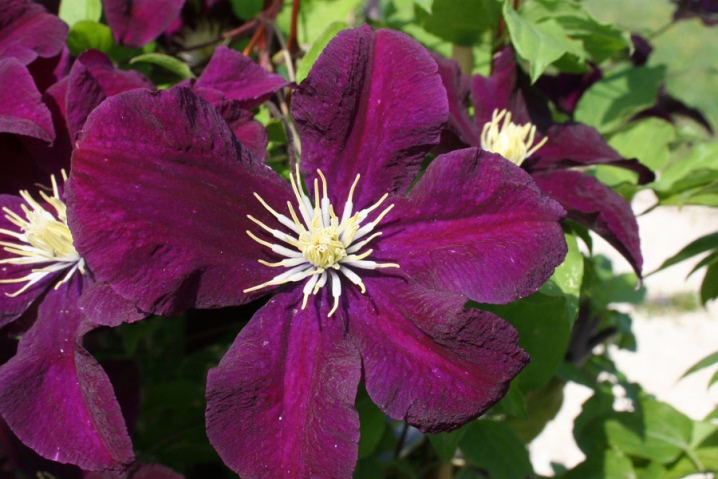
The plant is a climbing, deciduous liana, which is characterized by very rapid growth. Under favorable conditions, the shoots can grow by 5-10 cm during the night. During the summer, the hybrid is able to grow a maximum of five young shoots.
Since clematis grows quickly, you will need to attach it to a support so that it does not break and has an attractive appearance. It is enough to tie it up in one place. Due to its antennae, the hybrid will quickly orient itself in the situation and will begin to twine the structure provided to it on its own, rising higher and higher. The owner will only need to guide the stems from time to time so that the bush looks aesthetically pleasing, and not shapeless.
The procedure must be carried out very carefully, as the stems are fragile and may break.
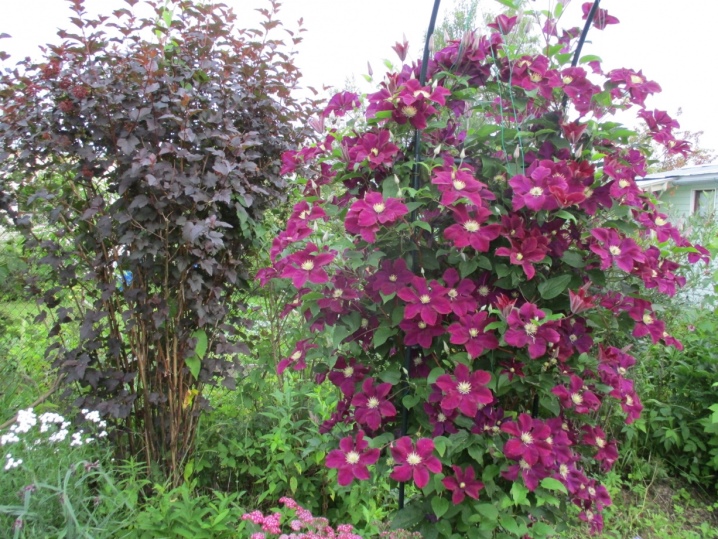
The color of the curly stems is green. The stems are covered with dark green oval leathery leaves. Their size varies from 10 to 15 cm in length. The plant has a powerful root system that can grow both in depth (about a meter) and in width.
In early summer, clematis is covered with large (12 to 17 cm in diameter) and incredibly beautiful flowers. Their purple-violet petals are velvety and pleasant to the touch. The core is decorated with a bunch of bright yellow stamens. The flowering period is quite long and lasts until September.
The plant is not afraid of frost. It can even withstand temperatures as low as -35 ° C. He does not need shelter.
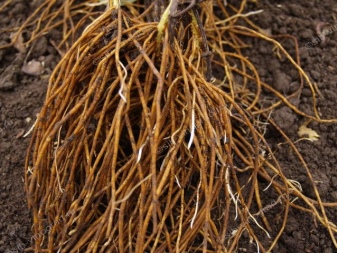
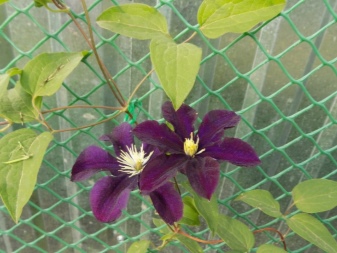
Landing
"Warsaw Night" needs a bright place where there will be plenty of sun. However, excessive overheating negatively affects the condition of the plant, therefore, if there is an excess of sunlight on the site, then shading will be required. For this purpose, you can use stunted annuals. Clematis does not like draft and wind.
If the region has a cold climate, then the hybrid is planted in late April or early May. In the southern regions, this can be done even in September. It is important that the seedling has more than one shoot.

The perennial is planted in fertile soil, light and slightly alkaline. If the soil does not meet these requirements, then add peat or sand (1 bucket), compost (2-3 buckets), superphosphate (150 g), dolomite flour (400 g) to it. All components must be thoroughly mixed and added to the soil. This procedure is carried out 1.5-2 months before the expected disembarkation of clematis.
To plant a plant, prepare a hole with a diameter of 60 cm. A drainage layer must be poured onto the bottom, for example, small fragments of brick. This is necessary to prevent stagnation of water, which is contraindicated in clematis. This is followed by a layer of nutritious soil, the perennial is placed on top, the roots are carefully straightened. The last stage is dusting with another soil layer.
Please note that the seedling deepens by about 10 cm. The soil must be poured several times during the summer season. Place other crops at a distance of about 70 cm from clematis.
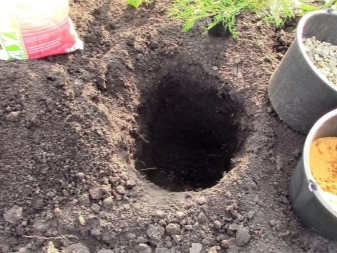
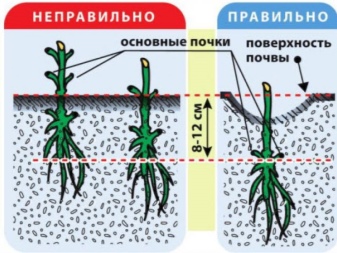
Care
Clematis should be watered abundantly once a week.If the weather is very hot, which is typical for the southern regions, then watering is carried out twice a week. The volume of water is directly proportional to the age of the plant, but in any case, at least 10 liters at a time will be required. The plant will indicate the lack of moisture by itself: its flowers will become smaller in size and lose their bright color, the branches will grow more slowly or their growth will stop altogether.
To prevent the roots of the perennial from rotting, watering is done around the perimeter. The foliage is not affected. To do this, you need to retreat from the central part of the plant by 30 cm.
For the normal development of the roots, it is necessary that the soil is enriched with oxygen. In this regard, loosening is required. The mulching process will help to retain moisture.

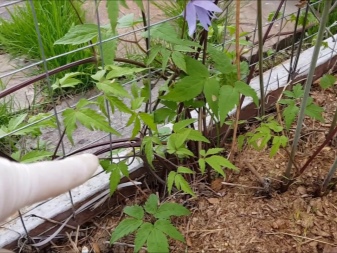
Fertilizers can be applied twice a month. Before starting the process, carefully read the instructions attached to the substances. Each stage of the development of "Warsaw Night" needs its own feeding:
- buds swell - nitrogen-containing fertilizers;
- bud formation - potassium and phosphorus;
- autumn flowering - fertilizers containing a complex of minerals;
- autumn pruning - wood ash.
A tall liana necessarily requires a garter or support. Otherwise, the shoots will break under the weight of foliage and flowers.
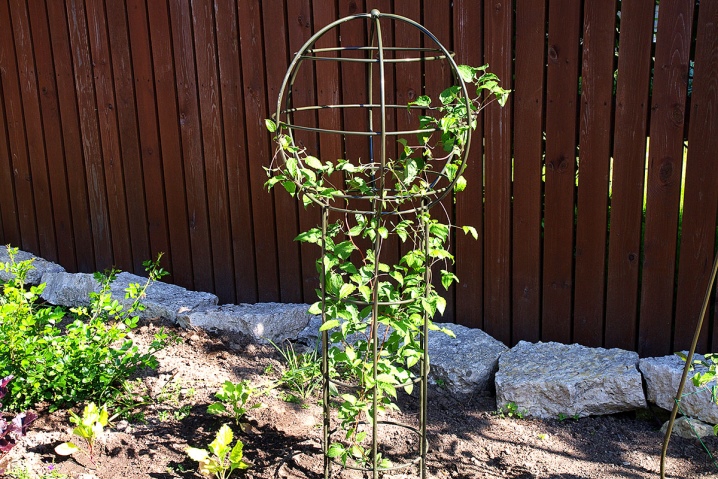
Trimming group
Clematis is a plant of the second or third pruning group. Pruning is a necessary process to ensure abundant flowering and large flowers. The procedure is carried out twice. The first time it touches the last year's stem after the end of its flowering. In an overly dense bush, you can completely remove the shoot.
The shoots of the current year are cut in the fall, before preparing for winter. This leaves one kidney. In the spring, waking up, clematis will give a large number of young shoots. After this procedure is performed in the fall, you must immediately cover the clematis. Do not leave it outdoors.
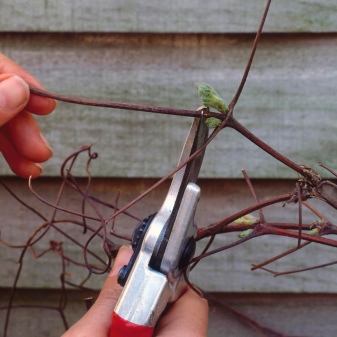
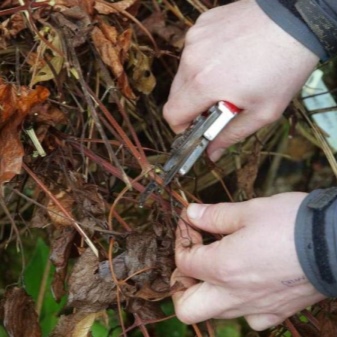
The appearance of the perennial is influenced by the degree of pruning of the bush. There are several variants of it. In order for clematis to bloom in due time, the flowering parts of the branches that have formed in the current year are removed. The next option is medium. It involves pruning to the level where the first true leaf was formed. When pruning heavily, the branch is removed completely.
Pruning allows you to adjust the appearance of the plant: its density, flowering. Without it, clematis will lose its aesthetics and decorativeness.
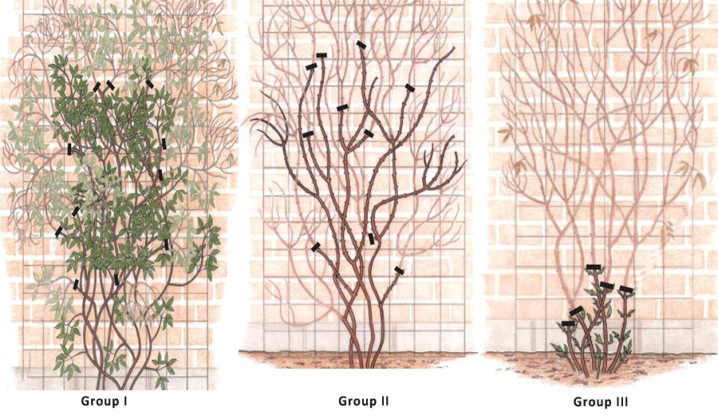
Preparing for winter
Despite its excellent frost resistance, "Warsaw Night" requires a number of activities that will help it survive the winter calmly. This should be thought about even at the landing stage. It is necessary to deepen the root system well so that it does not freeze out.
In late autumn, when the flowering process is completed, they begin winter preparation. For this, all foliage is removed from the shoots, since it is a hotbed for the development of fungal spores. Old mulch and other plants under the bush are also removed.
The root collar and branches are treated with Bordeaux liquid (1% solution). This stage must be carried out until the soil is frozen. A mixture of sand and ash is poured onto the root collar. You will also need rotted manure or peat.
It is important that all these substances are dry.
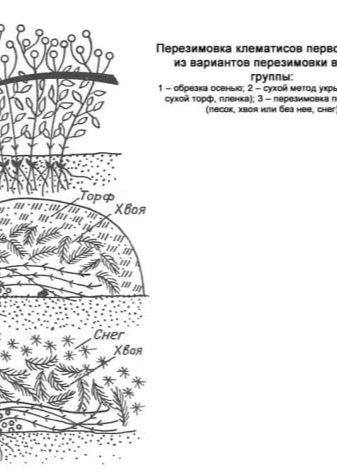
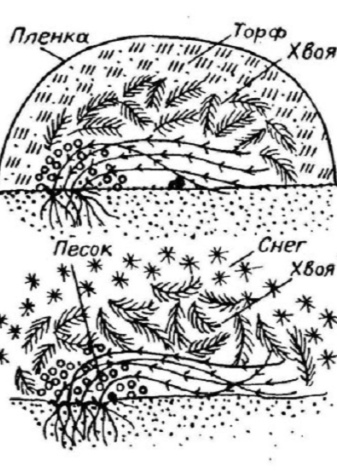
The shoots remaining on the bush after pruning are carefully twisted and laid on the ground. A layer of spruce branches is laid on top, and then a special covering material. In the lower part of it, you need to leave a place so that air can freely flow to the plant.
In the spring, with the onset of the thaw, the winter protective layer is removed. It is advisable to do this in cloudy weather. Further, clematis will need top dressing. To do this, dilute urea in warm water - 10 g per bucket of water.
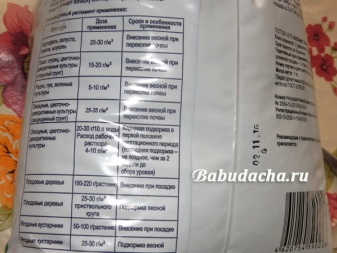
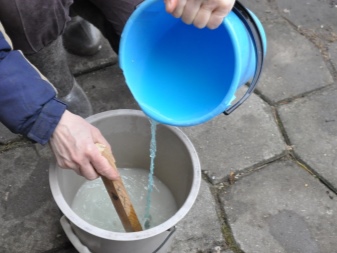
Reproduction
Anyone can propagate Varshavska Nike clematis - it's not at all difficult. The simplest methods are presented below.
- Division of the bush. It is suitable if your vine is 5-6 years old. Clematis is dug up and neatly divided into several parts. In this case, the root system cannot be damaged. Before planting such seedlings, they are kept in a solution that stimulates the growth of the root system.

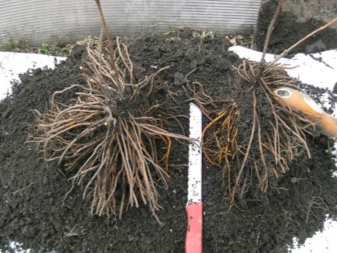
- Formation of layering. A trench is dug next to the bush, into which the shoot is bent and laid. Fall asleep with earth, spill well with water and sprinkle with mulch. The procedure is carried out in the fall. If the branch is rooted, then in the spring new shoots will appear on it. It is necessary to separate a new bush and transplant it to a permanent place in the fall.
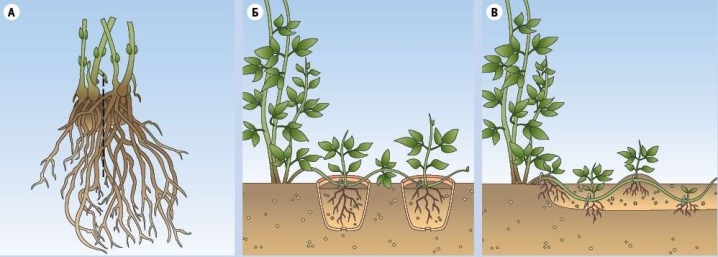
- Reproduction by green shoots. When the buds of clematis begin to form, cuttings are cut, the length of which is 10 cm. The foliage is removed from their lower part, and from the upper part, it is cut in half. The cut is treated with a composition that promotes the formation of the root system. The stalk is planted at an angle and covered with a jar or film. The land for such harvesting should be from a sand-peat mixture. The fact that the plant has taken root will be indicated by new leaves. The transplant is carried out when the clematis finally gets stronger.
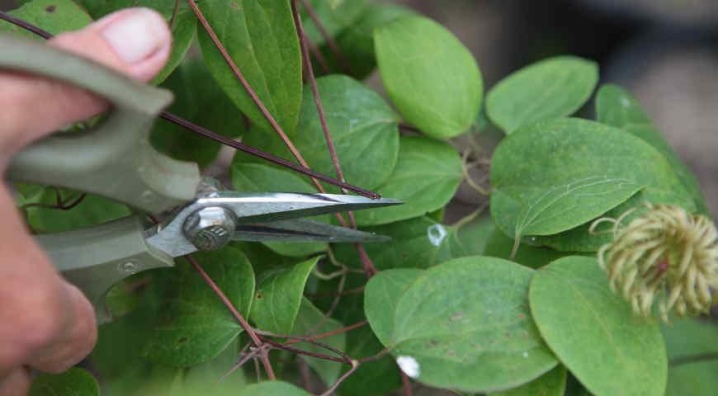
Diseases and pests
Like any other plant, "Warsaw Night" can get sick or become the target of insect pests. Consider the most common troubles that the owner of clematis may face.
- Rust. The spots on the shoots and leaves will tell about its appearance. Their color is bright orange, like an orange peel. The problem cannot be ignored, since over time the shoots will begin to deform, and the leaves will dry out. Such preparations as "Hom", "Topaz", Bordeaux liquid (1% solution) will get rid of rust. They need to process the plant. Preventive measures include removing weeds and affected branches.
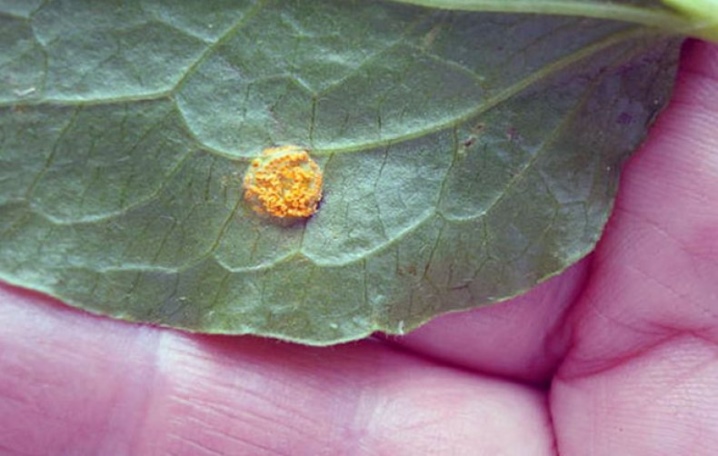
- Gray rot. Favorable conditions for its appearance are very high humidity. Signs - brownish-grayish round spots with a silvery bloom. You need to start the fight immediately, since rot spores are easily carried by the wind, and they are able to infect nearby plants. Means of struggle are "Azatsen" (2% solution), "Fundazol". Everyone can prevent the problem: it is important to avoid excessive watering and stagnation of water in the hole.
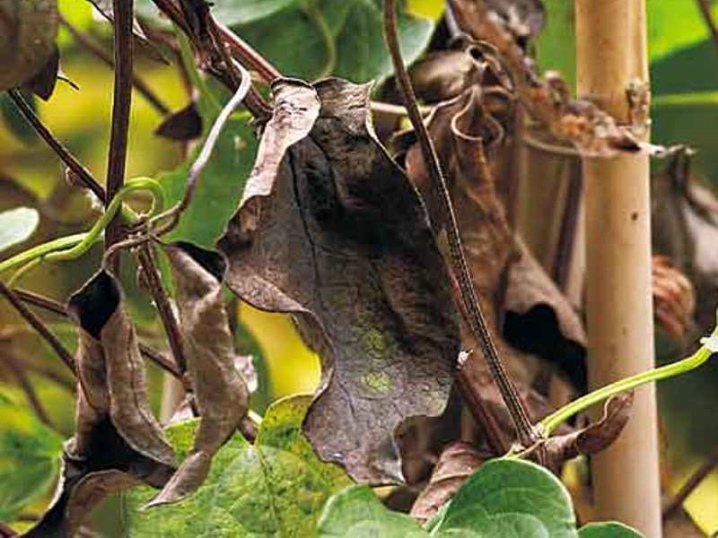
- Powdery mildew. The disease affects absolutely all terrestrial parts of the plant. Untimely treatment will lead to the death of the plant: the shoots will fall off. Spraying with soda or "Topaz" will help get rid of powdery mildew.

- Wilt. The disease is caused by a microscopic fungus that lives in the soil. Its action is aimed at clogging the pores of the plant. Clematis cannot breathe, sheds leaves. Signs of the disease - the appearance of brownish-brown spots on the leaves. You can get rid of wilt with the help of fungicides with a wide spectrum of action. Treatment will only help if the disease is at an early stage of development.
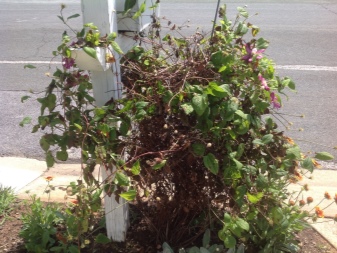
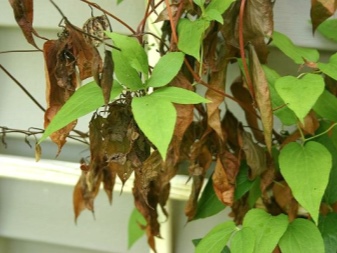
- Nematodes. They are small worms that grow in the roots of a perennial. You can even purchase an already infected plant. A sign of damage is the appearance of thickenings and growths on the roots. Exposure to pests causes the growth of clematis to stop. In this case, the leaves become small, flowers may not form, existing buds fall off. If the problem is running, then the plant cannot be helped. It must be removed from the ground and burned. Further, the soil is treated with special chemicals at the site of the seedling.
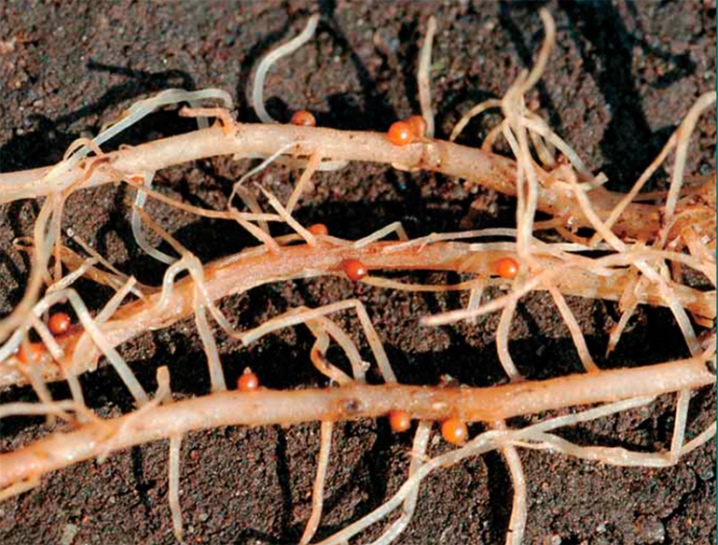
Examples in landscape design
With proper care, the lifespan of Warsaw Night is about 30 years, so the plant is widely used for landscaping gazebos, recreation areas in the garden.
- Often, owners of household plots install a decorative arch, which is entwined with clematis. This design looks very impressive.
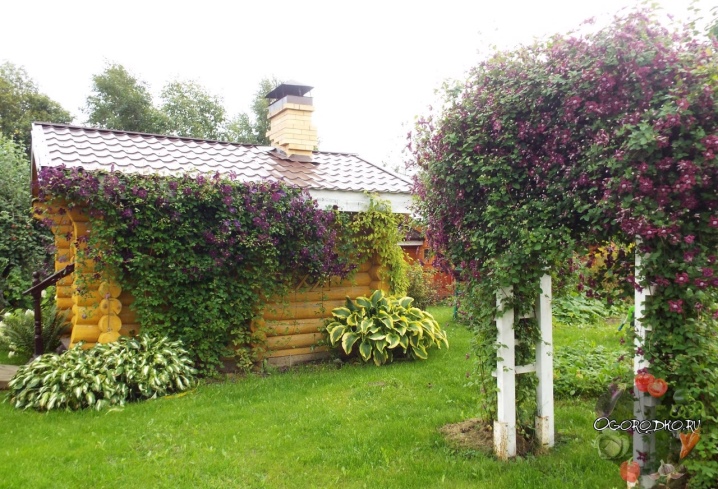
- Meshes are used as supports, which are stretched like a canvas.Shoots of clematis entwine it, turning it into a real living carpet.
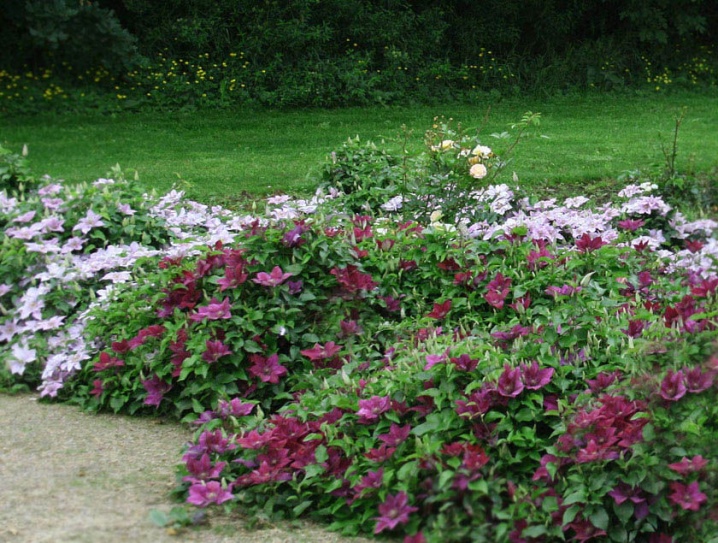
- Openwork forged supports look no less impressive. They are durable so they can be reused.

For an overview of Varshavska Nike clematis, see below.







































































































The comment was sent successfully.